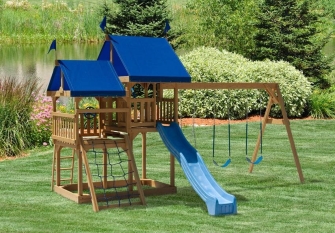Home Conveyances 101
 The doors, the windows, and most likely the azalea bush by the driveway—you’d expect those to stay with the new house you just bought, and you’d be right. But what stays in the house when you buy it? Who claims the washer and dryer? Will the sellers bequeath the lawn mower? What about the bathroom fixtures? Your real estate attorney will know specifics about what you are legally entitled to keep as the new homeowner, which can vary between states. Generally, though, the basic rule is this: if it’s nailed down, it stays. If it’s not, it goes—unless otherwise negotiated. Here’s a primer on the basics of what stays in the house for the new owner.
The doors, the windows, and most likely the azalea bush by the driveway—you’d expect those to stay with the new house you just bought, and you’d be right. But what stays in the house when you buy it? Who claims the washer and dryer? Will the sellers bequeath the lawn mower? What about the bathroom fixtures? Your real estate attorney will know specifics about what you are legally entitled to keep as the new homeowner, which can vary between states. Generally, though, the basic rule is this: if it’s nailed down, it stays. If it’s not, it goes—unless otherwise negotiated. Here’s a primer on the basics of what stays in the house for the new owner.
Appliances
Most appliances are moveable items, and moveable items are considered personal items or possessions of the seller. The real estate agent should have explained things such as, “The seller was leaving all the kitchen appliances and the washing machine—but not the dryer.” If there are leftovers that haven’t been mentioned yet—say, the portable air conditioner in a basement window—ask the experts as you negotiate the closing. The seller might agree, especially for a price.
Landscaping
Plants, shrubs and trees in the ground remain with the new house. Backyard equipment—such as lawn chairs, tables, swings and grills—are all considered the seller’s personal items. A swing set may get a bit tricky, because it is possible to claim it’s attached to the ground in some cases. If you have a questions about anything specific, the real estate attorney should make sure it is answered by the closing. The seller may be very willing to let you have backyard items for a price.
Light Fixtures
Light fixtures, lamps and chandeliers usually spark discussion between the buyer and seller. Items clearly attached to the home—and if removed may damage walls—are considered fixtures. Fixtures must remain in the new house unless the seller explicitly states the item isn’t included in the sale. The seller may not care about the $40 Home Depot sconce, but the family-heirloom, lead crystal chandelier could be held dear. If the buyer agrees to let a priceless fixture go, it falls on the seller to remove the chandelier without damaging anything. Lamps attached to nothing but the cord plugged into an outlet fall under “movable items” and go with the seller. It’s a good idea, if you’re the buyer, to inventory all the fixtures and fans in the new house, and you should make sure you and the seller know exactly who wants and gets what items before closing.
Everything Else
Built-in bookcases—they’re nailed down, so they stay. Ditto custom-made valances. But the owners have a right to claim store-bought curtains hung on rods. It has become more commonplace to have large televisions mounted on the wall, but they can be easily popped out. The owner of a 80″-plasma TV may not imagine letting that go over a $30 wall bracket. Those gray areas can be negotiated. If the sellers plan to move cross-country or downsize, you might even be doing them a favor by agreeing to take on some of their household goods. And if there’s something they desperately want to keep, that could play in your favor if you ask for a give-back on a price point. The one thing no one wants is for a pair of $50 curtains or a cheap TV wall bracket to make or break a home sale. So make sure you know what stays in the house when you’re buying it.
-From Realtor.com
